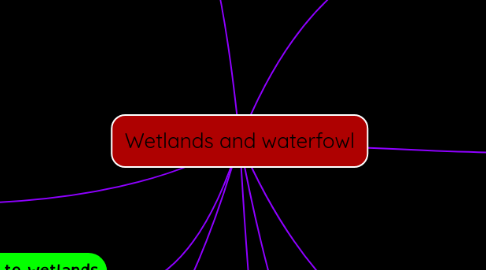
1. introduction
1.1. wetlands and waterfowls are very important for the world but in order to understand that we need to look at everything about them
2. why are wetlands important
2.1. here are somethings wetlands also do
3. Because they occur where the dry land meets water, wetlands play a critical role in the management of our water based resources.
4. they reduce flooding filter pollutants help recharge groundwater and contribute to natural nutrient and water cycles
5. hello there buddy how are ya nice job finding this secret
6. what are threats to wetlands
6.1. Creation, maintenance and transformation of wetland habitat was once controlled by natural processes. marshes along the great lakes and drowned river mouth lakes varied in size depending on rainfall trends and great lakes water levels .
7. wetlands regulations
7.1. state and federal legislation that regulates wetland use and alteration
7.1.1. Michigan gaemaere Anderson wetland protection act, witch is now part 303, wetlands protection of the natural resources and environmental protection act, 1994
8. dude really there is nothing else
9. other then my channel name subscribe to monkey louman
10. history
10.1. twelve thousand years ago the great ice age was coming to an end in Michigan. as the glaciers melted, they left behind a change landscape. water was everywhere. new river channels cut though the sands and gravels and dried into broad lowlands, flowing finally into lake basins carved the glaciers. massive chunks of ice became kettle lakes, while winds sculpted coastal dunes of shifting sand.
11. mayor wetland types
11.1. bogs
11.1.1. bog occur where accumulations of decaying vegetation form mats that eventually cover and then fill old ponds or kettle lakes. in some bogs, open water may be surrounded by floating vegetation.
11.2. marshes
11.2.1. Marshes have standing water from less than an inch to several feet deep. the amount of water can fluctuate seasonally or from year to year.
11.3. swamps
11.3.1. swamps can be best described as a flooded woodlands or shrub lands. unlike marshes , they are dominated by woody plants. the soil is usually waterlogged throughout the growing season though some swamp soils may become dry during the how summer months

